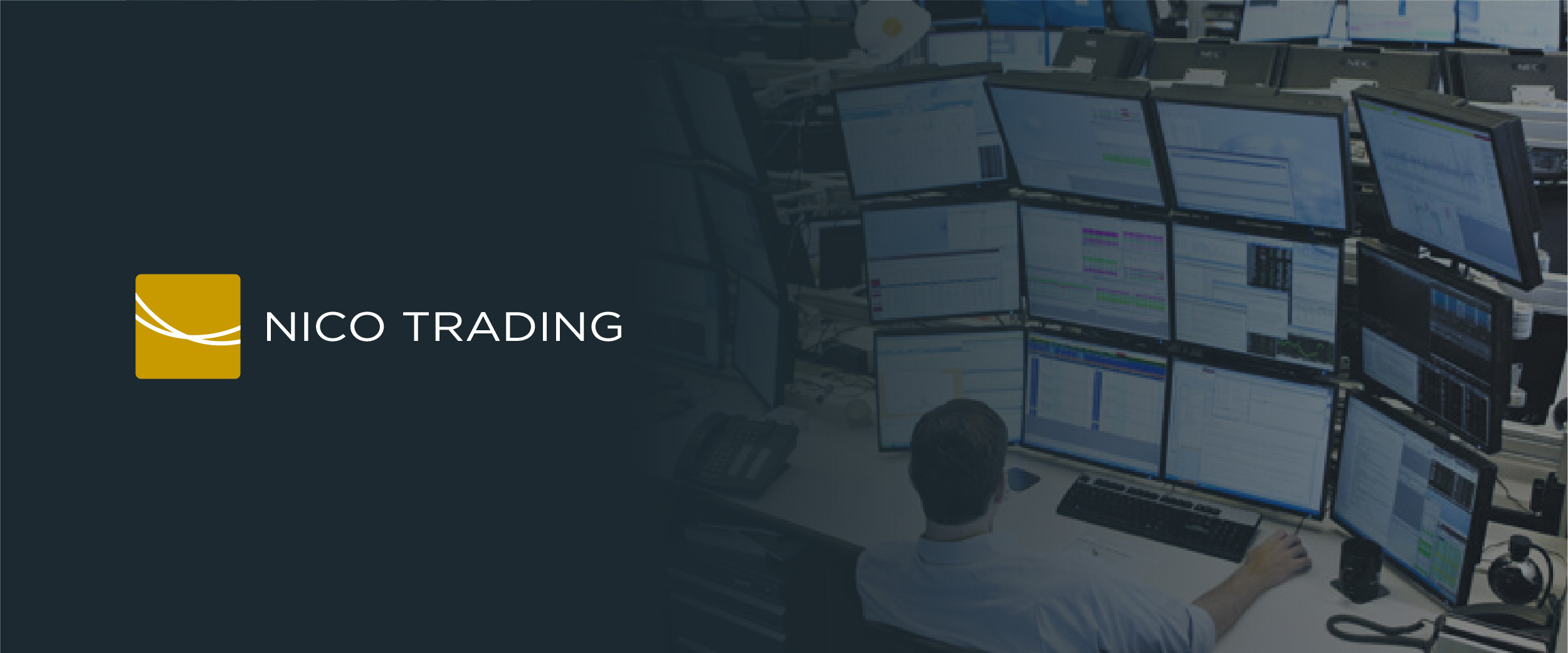
"JUSTRADER trading room" by Justrader, used under CC BY / Gradient added to original
THE CHALLENGE
A pool of legacy trading tools grew organically over the years and lacked systematic integration and maintenance. They prevented new tools from being built in a sustainable way, leading to growing risks in trade pricing and execution across multiple commodity and financial products.
THE OUTCOME
A set of integrated trade pricing, prediction, and execution tools for futures and options trading in various commodities and financial products. Compatible for desktop and mobile use.
Overview
Nico Trading is a propriatory futures and options trading company and a market-maker (meaning that they carry out pricing calculations based on an internal model and contribute to the collective pricing effort of certain products in the market). Nico traders buy and sell both comodities (such as orange juice and natural gas) and financial instruments (such as equity stock and fixed income products). Some trades are carried out semi-automatically by traders at their desks comparing theoretical pricing and market conditions and executing trades through the software tool. Some trades are carried out manually between traders on the Exchange floor and traders in the office communicating over the phone. It is a complex, fast paced, and data-rich environment that require flexible yet accurate software tools to succeed.
Problem Statement
Speed and accuracy matter the most in trading. Though Nico's legacy trade pricing and execution systems grew organically with layers of temporary tools hacked together to capture one time market opportunities that have not been properly integrated into the system. Both backend infrastructure and front end user experience are inconsistant, inefficient, and not sustainable, contributing to manual trade errors and financial losses.
Users and Audience
Colleagues in every department needed parts of the platform to carry out their functions:
- Options and futures traders
- Financial Engineers
- Back office trade reconciliation coworkers
- Internal compliance officer
- Development operations team
Team and My Role
Within this 150 person organization, I worked as the sole project manager and business analyst on a 12 person software development team. Depending on project, my responsibilities ranged from product strategy to collaboration coaching, project management, product research and design, interaction design and prototyping, development support, and testing. I initially started the engagement as a Thoughtworks Agile Coach before joining Nico full time to continue the work.
Constraints
- Legacy system
- Time and accuracy tradeoff
- Limited screen realestate
- No prior emphasis or awareness of human-centered design
- Complex and large quantity of data
- One platform meeting multiple types of trades and products
- Need for predictive tool
Design Process
- Observe trader's process
- Gather business requirements
- Gather system requrirements
- Gather data requirements
- Gather financial engineer requirements
- Gather compliance requirements
- Visualize backend system
- Design and prototype
- Scope development work into iterative sprints
- Test and launch and test
* Note: As with most design processes, mine is also not linear
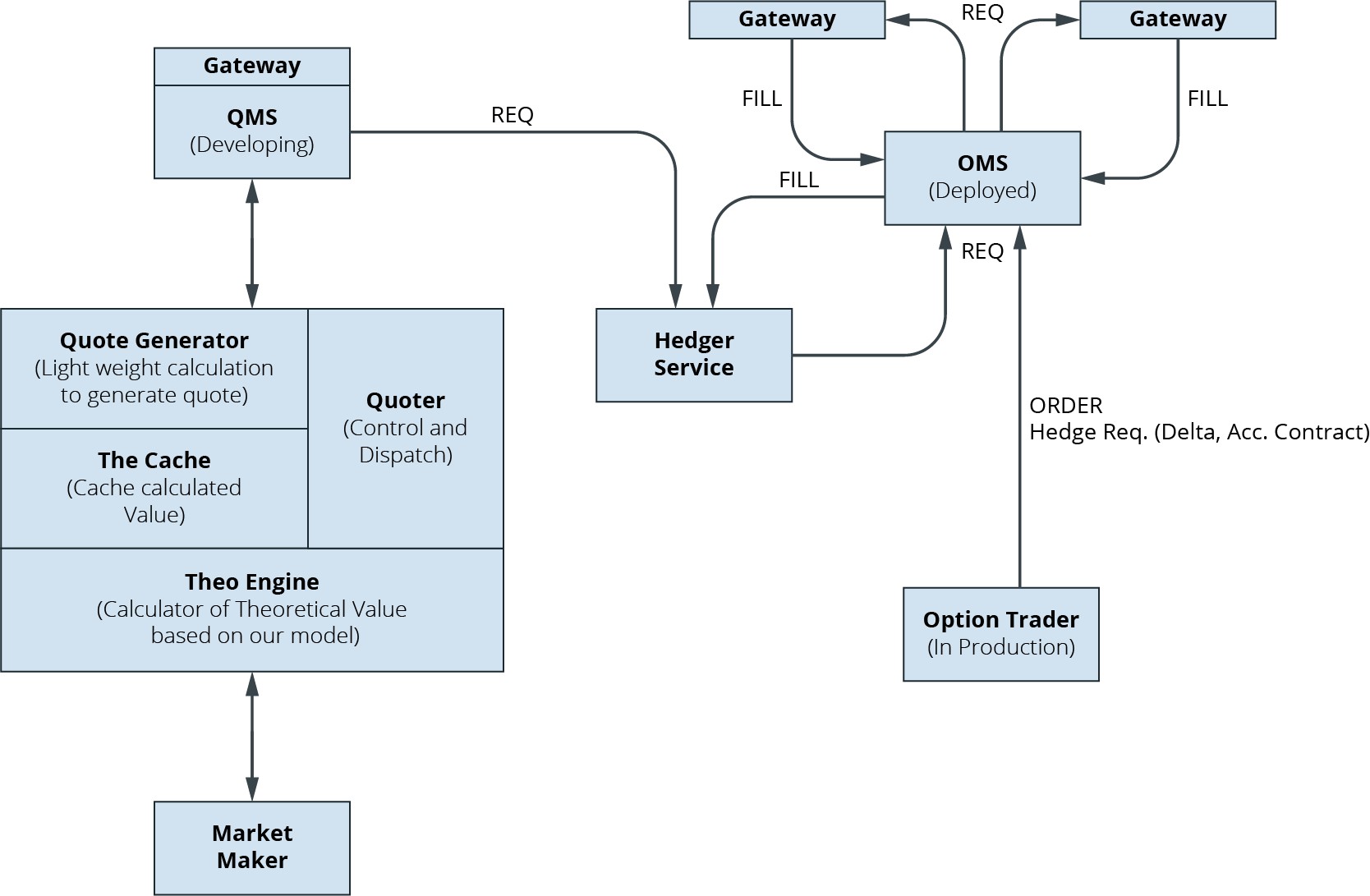
Backend Service Visualization
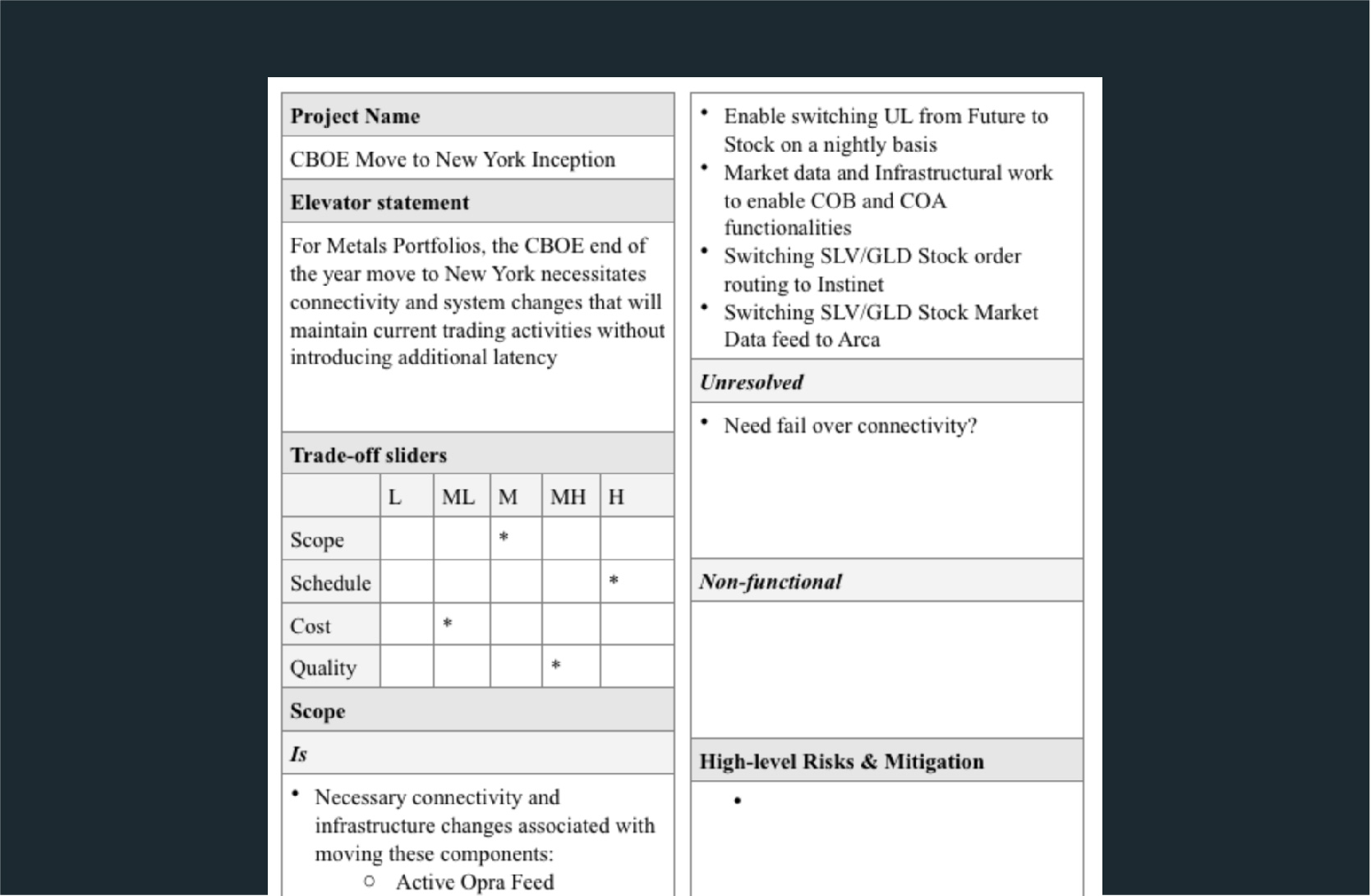
Project Inception Plan

Trading Interface Prototype
Retrospective and Lessons Learned
- Working with complex data and system constraints make for very interesting design challenges
- With users whose processes are complex but not great at verbalizing their needs, observation and ask confirming questioning is key
- It is important to keep a cross-functional view and surface assumptions in complex interface designs
- Often simple solutions are the best, especially in complex systems
- When in doubt, visualize, visualize, visualze
- Do not be carried away by a fast-paced, performance-driven culture, be the calm voice in the room and listen to needs underneath the anxiety
- Design is not a linear process, it involves flexible use of tools and skills to arrive at good solutions that balance everyone's needs
Selected Works
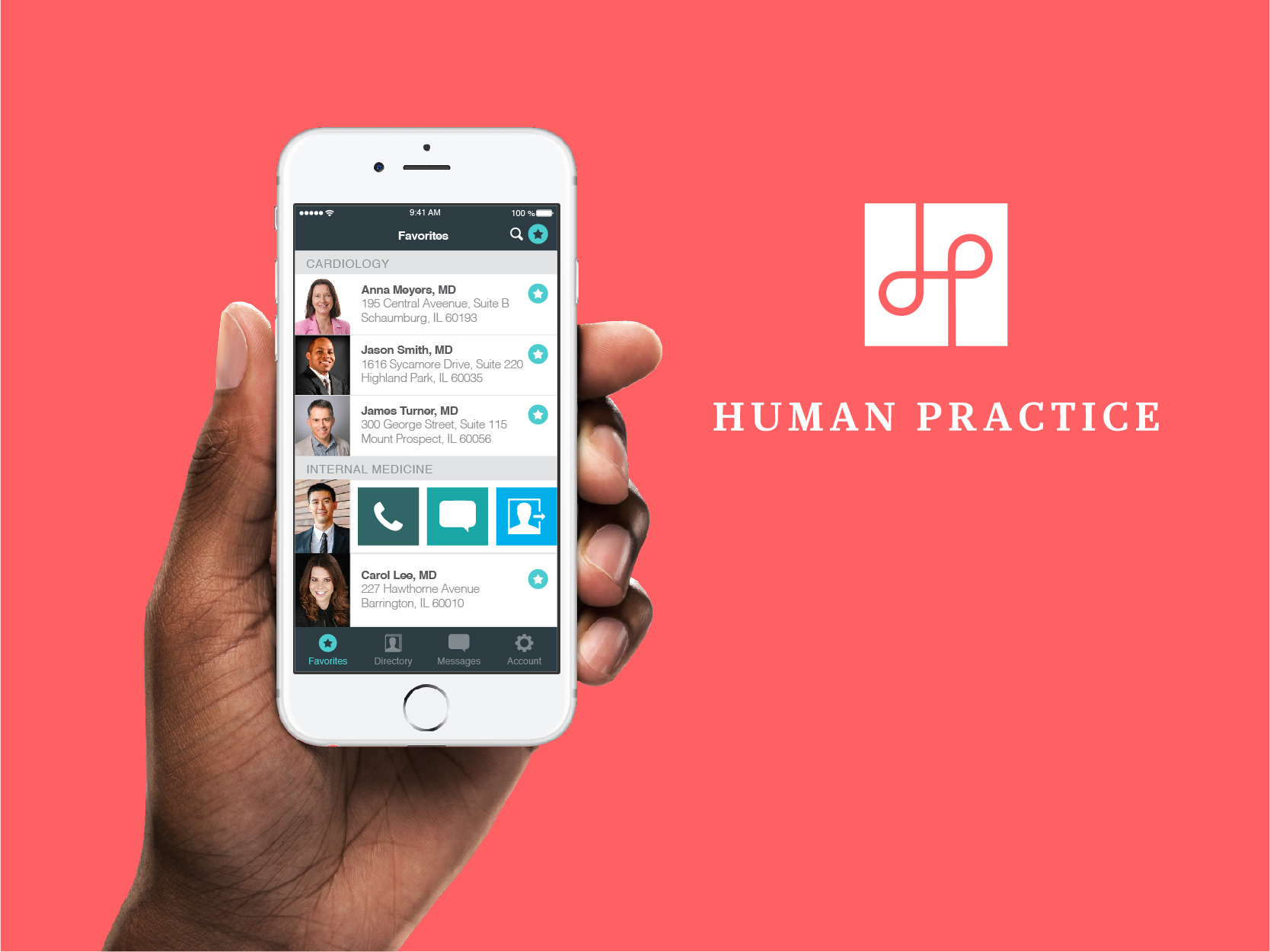
Human PracticeHealthcare Mobile Application
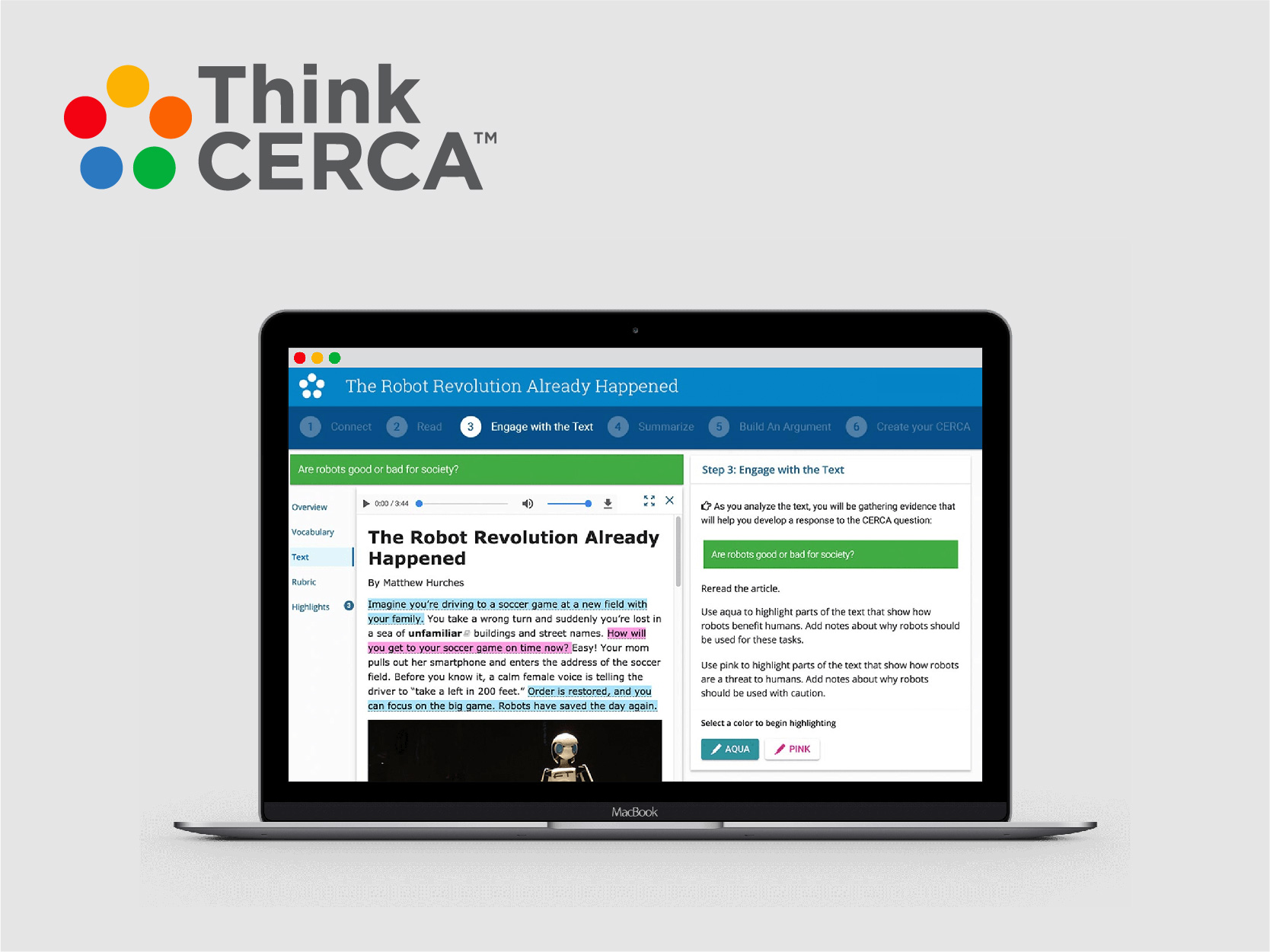
ThinkCercaOnline Learning Platform
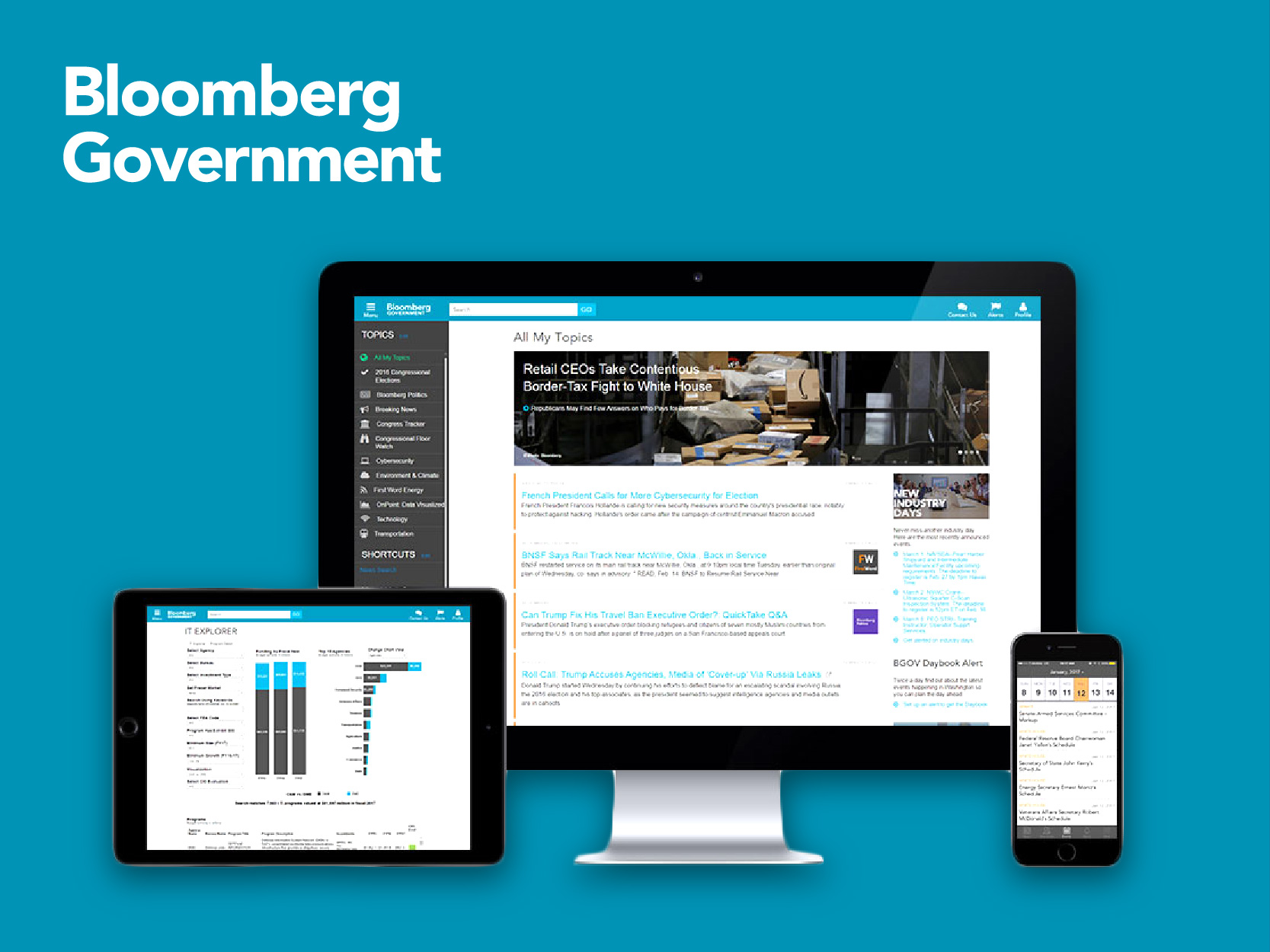
Bloomberg GovernmentWeb and Mobile Application
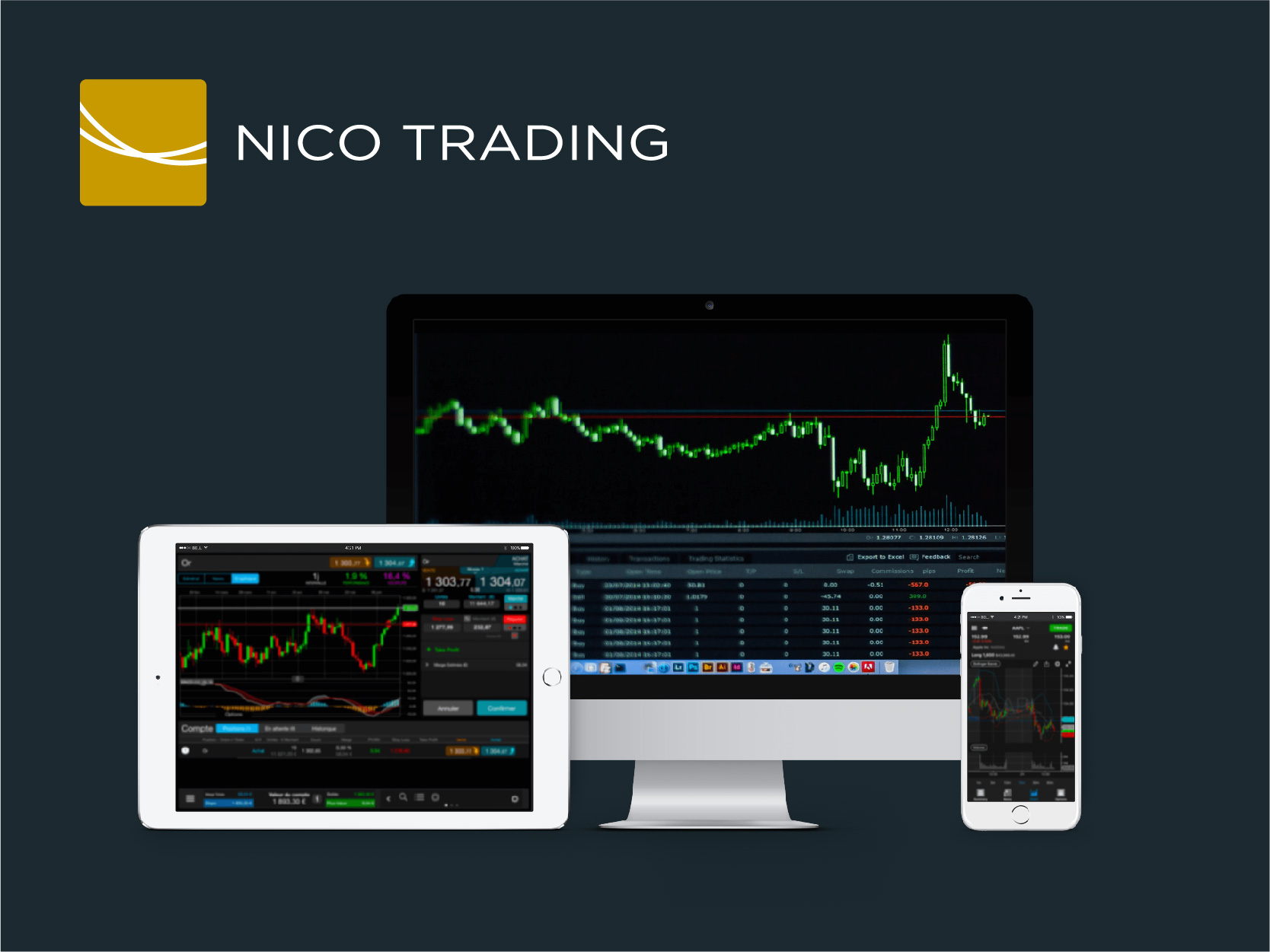
Nico TradingTrading Tools
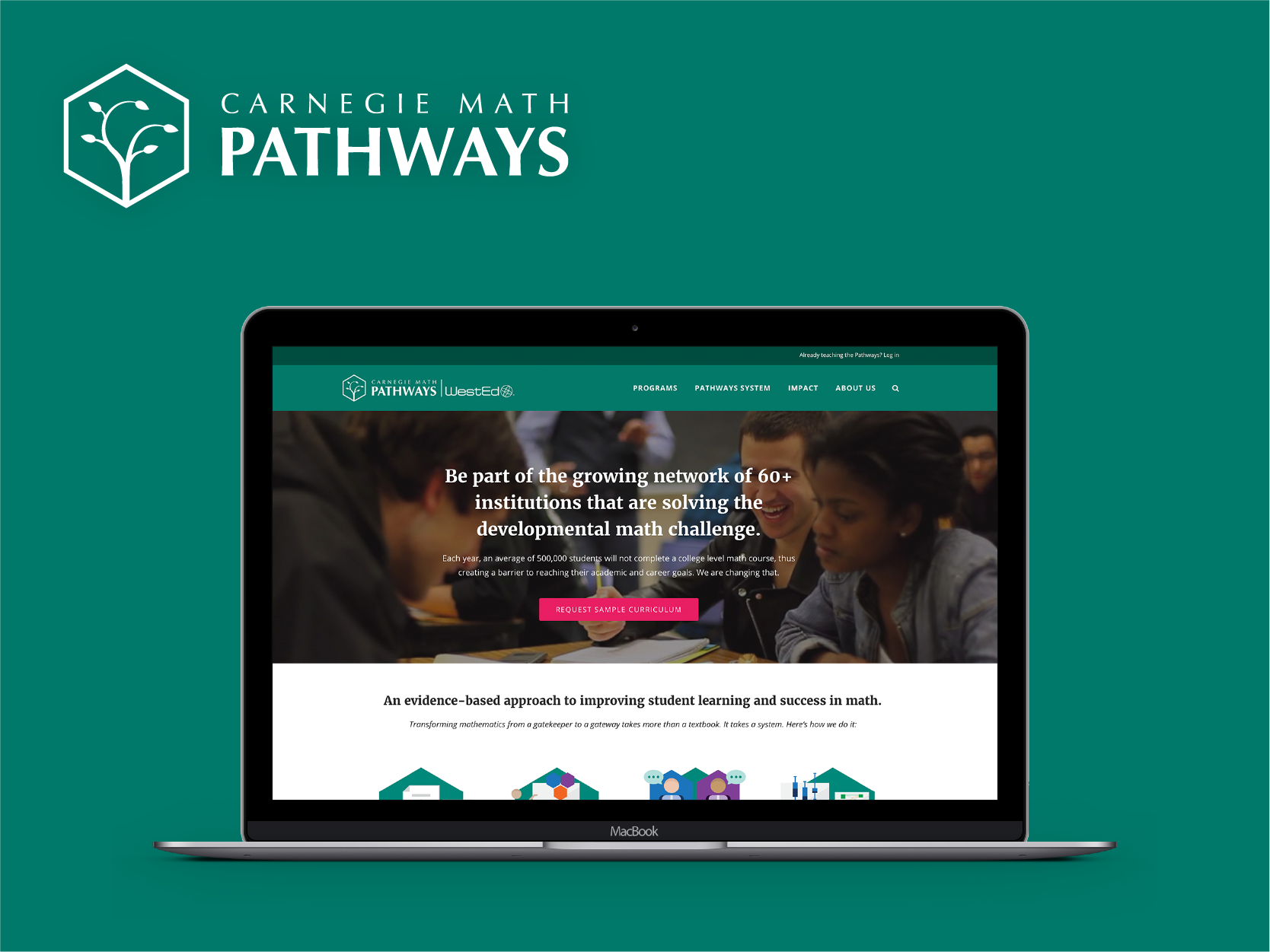
Carnegie Math PathwaysEducational Program/Initiative
Copyright © 2018 Mingzhu He
Thank you for stopping by! ♥